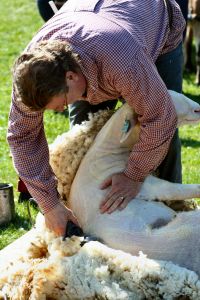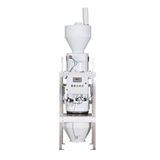Bowyer and Livermore Pty Ltd Director, Grant Lynch, believes that poor management of flocks has contributed to the lice infestation.
"It's a combination of people not taking care of their flocks and not having enough money to pay for the treatment. Also, there aren't enough resources for people who are hit with infestations to know what chemicals and treatments actually work. There are new chemicals available now that aren't as effective as 15 years ago," said Lynch.
On a national scale, the lice epidemic costs the sheep industry in excess of $123 million each year which includes chemical usage, treatment costs, reduced wool quality and lost production.
Department of Agriculture and Food's Veterinary Officer and co-author of the Sheep Industries and Pasture Program, Dr Di Evans says there are ways of combating lice and farmers should check on a regular basis for signs of lice.
"The best way to check for lice is to part the wool in bright light, on the neck, shoulder, mid-side and flank of sheep showing signs of rubbing. They will often cling to wool fibres close to the skin surface and will move away from the light when exposed.
"Immature lice are smaller, lighter in colour and have less obvious bands on their body. A minimum of 5 partings should be done on each side. The ideal time to check for lice is during the six months before shearing. They are hard to detect on sheep with short wool as shearing removes at least half the population," she said.
However, Lynch warns that farmers should not expect instant results from treatment chemicals.
"I believe there are some resistances to lice in some chemicals, it is not a one-off treatment. It is a danger if the farmer misses one sheep because then that sheep has infested the whole flock. Each sheep should be checked and treated at the same time," Lynch said.
"The key to reducing reliance on chemicals is to use an 'integrated pest management' (IPM) approach to combat lice. Eradication can only be achieved by using chemicals effectively whereas good management is vital to prevent lice re-infesting the flock. Good management also includes regular effective monitoring for signs of lice," said Evans.
Evans maintains that each infected sheep could prove costly to farmers and impossible for farmers to produce prime lambs of a saleable weight and wool cuts.
"The fleece of infested animals will show varying levels of derangement ranging from slight tuffening of wool to severe cotting and a yellow stain. Lice do reduce the fleece weight and wool quality but not fibre diameter. Several studies have shown that over a 12 month period the clean fleece weight may be reduced by 0.2-1 kilogram. It depends on the level of infestation," she said.
Working with sheep and cattle farmers since 1973, Lynch understands that it is not the only problem for farmers in this modern age.
"It's not the worst parasite out there which is why people aren't as vigilant," he said.
For more information about the sheep lice and the Pasture Program, visit ww.wa.gov.au.













